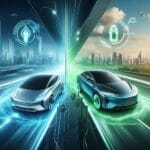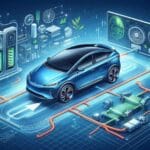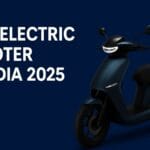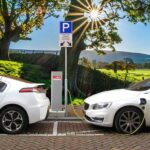
The rising adoption rates of EVs equates to the pressing need to recycle its components that can be used for other purposes. Although EV batteries take center stage at the moment with a staggering 20,5 kilotons estimated to reach their end-of-life by 2040, equally, EV mechanics or power electronics contain valuable components that could be reused and repurposed to achieve a circular economy. Just as batteries are given life, repurposed EV power electronics have the potential to be reused in several applications extending their use and lifespan. Here’s how this can be achieved.
Charging and Logistics
EV charging and charging logistics are not just secondary services, they are critical in the widespread adoption, functionality, and economic viability of electric cars. Without a solid and effectively designed charging infrastructure, electric mobility cannot be fully implemented. One of the major hurdles to EV adoption is the range factor making the consumer anxious if they run out of power before reaching a destination or a charging area. Therefore, a reliable charging infrastructure can address this problem in addition to the convenience and accessibility it offers. On the other hand, businesses operating vehicle fleets must ensure that they optimize routes, plan for charging station availability, and aim for optimal charging times to minimize disruptions to their operations.
An issue that affects battery life is battery degradation which can be subjected to stress and discharging cycles. To illustrate, fast charging generates significant heat which can stress the battery. However, this does not only affect the battery but also the power electronics. Hence, frequent exposure to high temperatures can accelerate the degradation of semiconductor components and other electronic parts. Faster degradation means a shorter life span for both batteries and power electronic parts affecting the volume and timing of EV parts that enter the recycling stream.
These electronics often rely on complex printed circuit board assemblies (PCBA), which integrate crucial components like semiconductors and sensors. As such, the condition and recyclability of PCBA play a key role in determining how efficiently EV power electronics can be refurbished or repurposed.
Design Modification
EV power electronics such as inverters, converters, onboard charger, and controllers contain valuable elements. For example, inverters contain direct bond copper (DBC) while converters might be made up of aluminum, iron, and precious metals in small quantities like gold and silver. Thus, it is vital that power electronics parts can be easily and inexpensively dismantled at the end of their life to recycle and repurpose these parts effectively. Therefore, the design of these parts must be modified incorporating modularity, material compatibility, and fastening methods that will make it easy to extract valuable natural elements.
Furthermore, using eco-friendly materials for the components including sustainable packaging materials can make power electronic parts efficient. Beyond this, engineers can explore innovative thermal strategies that will extend the useful life of power electronics that can be used for second-life applications. Just as EV batteries have second life in stationary energy storage, repurposed EV power electronics might be applied in smaller-scale renewable systems or less demanding vehicle applications. In summary, the issue touches on several aspects of mechanical, electric, and materials science to make them sustainable across their entire lifecyle.
Recycling Processes
In principle, recycling power electronics in EVs is similar to general e-waste with the added complexities due to specific designs and higher value materials. However, the most crucial first step is the safe manual or automated disassembly of power electronic modules. Thus, it makes sense to design power electronics that can be easily and safely removed from the vehicle. Another concern is that many components may be difficult to separate as they are protected and held together by epoxy and other resins. Once components are broken down, they may be subjected to various metallurgical processes such as smelting, hydrometallurgy, direct, or mechanical separation.
A potential solution is to use automation and robotics to safely and efficiently dismantle EV power electronics parts boosting efficiency and reducing human exposure to hazardous substances. Researchers are also working on developing selective chemical processes targetting specific valuable elements for recovery while advanced sorting technologies can make material identification easier for automated sorting.
To sum it up, recycling EV power electronics is an exciting field that is in line with the principles of the circular economy. It is expected that investment and innovation will increase in the future to meet growing volume of EVs at the end-of-life stage.








